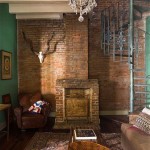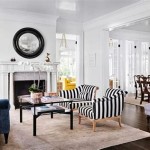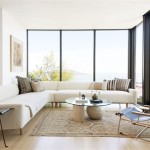How to Decorate a Small Master Bedroom
Decorating a small master bedroom presents unique challenges and opportunities. Maximizing space while creating a comfortable and stylish retreat requires careful planning and execution. This guide provides practical advice on how to transform a compact master bedroom into a functional and aesthetically pleasing sanctuary.
Prioritize Functionality and Space Optimization
The cornerstone of successful small-space design is prioritizing functionality. Every element must serve a purpose and contribute to efficient use of the available square footage. This often means making smart choices about furniture and layout. Consider the necessity of each item and eliminate anything superfluous. The goal is to create a sense of spaciousness, even when the room is physically small.
One crucial aspect is the bed itself. Choosing the right size is paramount. A queen-size bed is usually the largest advisable option for a small master bedroom, as a king-size can overwhelm the space and make maneuvering difficult. Alternatively, a full-sized or even a twin bed, depending on the user's needs, might be a more prudent choice. Consider a bed frame with built-in storage, such as drawers underneath the mattress. This provides valuable storage space for bedding, clothing, or other items, freeing up closet space and reducing clutter. Consider a platform bed for its clean lines and lack of a bulky headboard, maximizing floor space.
Another key factor is utilizing vertical space. Tall, narrow storage units, such as wardrobes or bookshelves, can hold a significant amount of belongings without taking up valuable floor area. Wall-mounted shelves are another excellent option for displaying decor, storing books, or keeping bedside essentials within reach, thereby freeing up the floor.
Choose Light Colors and Maximize Natural Light
Color plays a crucial role in the perception of space. Light and neutral colors create an illusion of spaciousness, making a small room feel larger and airier. Opt for a palette of whites, creams, light grays, or pale blues. These colors reflect light, brightening the room and preventing it from feeling cramped. Accent colors can be introduced through bedding, pillows, artwork, or decorative accessories, maintaining the overall light and airy feel.
Maximizing natural light is another essential element. Sheer curtains or blinds allow sunlight to filter into the room while maintaining privacy. Avoid heavy drapes that can block sunlight and make the room feel darker. Position mirrors strategically to reflect light, creating the illusion of depth and further brightening the space. Place a mirror across from a window to bounce natural light around the room.
Select Multi-Functional Furniture
In a small master bedroom, every piece of furniture should serve multiple purposes. This approach maximizes functionality and reduces the number of items needed. A nightstand with built-in drawers or shelves provides storage for bedside essentials. A bench at the foot of the bed can serve as seating, storage, and a place to put on or take off shoes. Consider an ottoman with a lift-top that can function as both a footrest and a storage container.
Wall-mounted desks or folding desks provide a dedicated workspace without taking up significant floor space. They can be easily folded away when not in use, freeing up valuable room. Invest in a well-designed, multi-purpose storage unit that combines shelving, drawers, and a hanging rod for clothes. This combines several functions into a single, space-saving piece.
Optimize the Bedroom Layout
The layout of the furniture is crucial for maximizing space and creating a functional flow. Consider the placement of the bed first, as it is typically the largest piece of furniture. Experiment with different arrangements to find the most suitable solution. In general, placing the bed against the longest wall is a good starting point.
Ensure there is adequate space between the bed and other furniture, such as nightstands or dressers, to allow for comfortable movement. Avoid blocking doorways or walkways. Consider the placement of windows and doors, and arrange furniture to avoid obstructing access to these features. Create a clear pathway from the entrance to the bed and other functional areas of the room.
Employ Clever Storage Solutions
Effective storage solutions are essential for keeping a small master bedroom organized and clutter-free. Utilize every available space, including under the bed, inside the closet, and on walls. Consider vertical storage solutions, such as tall shelving units or over-the-door organizers. These maximize storage capacity without taking up floor space.
Use storage bins, baskets, and containers to organize belongings within drawers, shelves, and closets. This will keep items organized and accessible. Consider adding custom shelving or closet organizers to maximize storage within the closet. Utilize the walls for hooks to hang clothes, bags, and other frequently used items. Regularly declutter to minimize the number of items that need to be stored.
Add Personal Touches with Restraint
While it is important to personalize the space, restraint is key in a small room. Select decorative accessories carefully, avoiding clutter and overcrowding. Choose a few key pieces, such as a framed artwork, a decorative pillow, or a small vase, to add personality and visual interest.
Consider the scale of the accessories. Choose pieces that are proportionate to the size of the room and the furniture. Avoid overly large or bulky items that can overwhelm the space. Use mirrors, artwork, and plants to add visual interest to the walls. Select items that complement the overall color scheme and design style of the room.
Pay Attention to Lighting
Lighting plays a crucial role in setting the mood and enhancing the functionality of a small master bedroom. Layering different types of lighting creates a well-lit, inviting space. A combination of ambient, task, and accent lighting is ideal.
Ambient lighting provides overall illumination. This can be achieved with a ceiling fixture, such as a flush-mount light or a track lighting system. Task lighting provides focused illumination for specific activities, such as reading or working. Bedside lamps are essential. Accent lighting adds visual interest and highlights specific areas or features of the room. This can include wall sconces, picture lights, or decorative lamps. Use dimmer switches to control the intensity of the lighting and create different moods. Consider smart lighting options that allow for remote control and customization.

Design Tricks For A Small Master Bedroom Sumptuous Living
:strip_icc()/cdn.cliqueinc.com__cache__posts__263938__small-master-bedroom-ideas-263938-1532626537299-image.700x0c-f337887fd5ce4cafaa454a5cd3f48af7-e61f39c2ca334990b574b0309165b180.jpg?strip=all)
21 Gorgeous Small Primary Bedroom Ideas

Working With A Small Master Bedroom Emily Clark
:max_bytes(150000):strip_icc()/small-master-7-586d7a695f9b584db320c4da.jpg?strip=all)
Small Primary Bedroom Design Ideas Tips Photos

Small Master Bedroom Ideas The Honeycomb Home

7 Small Master Bedroom Design Ideas The Ginger Home

Small Master Bedroom Design Ideas Making A Feel Larger

Design Tricks For A Small Master Bedroom Sumptuous Living

Cozy Master Bedroom Design Ideas Abby Organizes

Small Master Bedroom Ideas The Honeycomb Home
Related Posts







